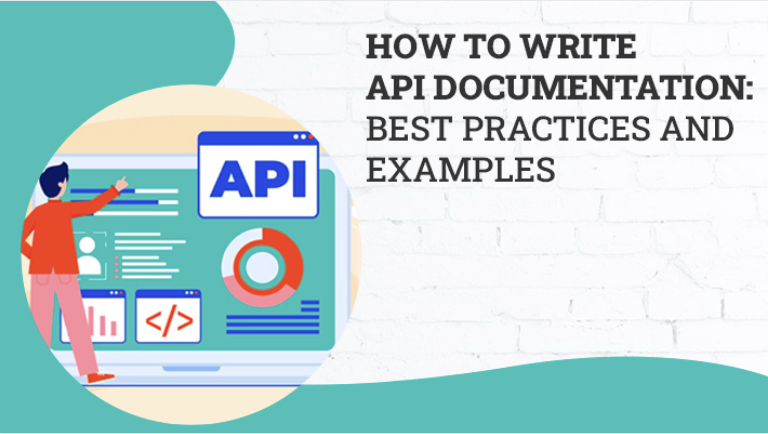API documentation is a collection of informative resources designed to guide developers in effectively utilizing an Application Programming Interface (API). It offers a comprehensive understanding of the API's functionality, purpose, and integration methods. This documentation encompasses key components such as an overview that outlines the API's objectives, authentication processes, and available endpoints with associated HTTP methods. It elucidates the request and response formats, including parameters, data types, and error handling procedures. Code examples in various programming languages illustrate implementation techniques.
Additionally, tutorials and use cases provide step-by-step guidance on practical scenarios. The documentation highlights versioning, changelogs, and usage policies, enabling developers to remain updated. With interactive interfaces like Swagger, developers can directly explore and test API endpoints. Overall, well-crafted API documentation streamlines developers' interactions with the API, facilitating smoother integration and enhancing the API's accessibility and usability.
API Documentation Best Practices And Examples
Writing API documentation is crucial for helping developers understand how to use your API effectively. Clear and comprehensive documentation can save developers time and frustration, and it can contribute to the success of your API. Here are some best practices and examples to guide you through the process:
1. Start with an Overview: Provide a high-level overview of what your API does, its purpose, and the problems it solves. This helps developers quickly understand whether your API suits their needs.
Example:
**Introduction**
Welcome to the XYZ API documentation. The XYZ API allows developers to access real-time weather data for any location around the world. With our API, you can retrieve current weather conditions, forecasts, and historical data seamlessly.
2. Installation and Authentication: Clearly explain how to set up and authenticate access to your API. Include information about API keys, tokens, or any other authentication methods required.
Example:
**Getting Started**
To start using the XYZ API, you need to sign up for an API key. Follow these steps to get started:
1. Sign up on our website to create an account.
2. Log in to your account and navigate to the API section to generate an API key.
3. Include the API key in the headers of your requests as 'Authorization: Bearer YOUR_API_KEY'.
3. API Endpoints: List all available endpoints along with their HTTP methods, parameters, and request/response formats. Include examples of how to make requests and interpret responses.
Example:
**Endpoints**
1. `GET /weather/current`
Retrieves the current weather for a given location.
Parameters:
- `location` (required): The name of the city or coordinates (latitude, longitude).
Example Request: GET /weather/current?location=New York
Example Response:
{
"temperature": 25.6,
"conditions": "Clear sky"
...
}
4. Request and Response Formats: Explain the structure of the request and response payloads. Include information about required and optional parameters, data types, and any specific formatting rules.
Example:
**Request Format**
Endpoint: `POST /user/create`
Request Body:
{
"username": "john_doe",
"email": "[email protected]",
"password": "secretpassword"
}
5. Error Handling: Document potential errors and status codes that can be returned by your API. Provide clear explanations for each error and suggestions for resolution.
Example:
**Error Handling**
Status Code: 400 Bad Request
{
"error": "InvalidParameter",
"message": "The 'location' parameter is missing or invalid."
}
6. Rate Limiting and Usage Policies: Explain any rate limiting mechanisms or usage policies in place to prevent abuse of your API. Include details about rate limits, quotas, and how developers can request higher limits.
Example:
**Rate Limiting**
Our API enforces a rate limit of 100 requests per hour for free-tier users and 1000 requests per hour for premium users. If you exceed the limit, you will receive a 429 Too Many Requests response.
7. Code Examples: Provide code snippets in various programming languages to demonstrate how to make API requests and handle responses.
Example:
# Python Example using Requests library
import requests
url = "https://api.xyz.com/weather/current"
params = {"location": "New York"}
headers = {"Authorization": "Bearer YOUR_API_KEY"}
response = requests.get(url, params=params, headers=headers)
data = response.json()
print("Current temperature:", data["temperature"])
print("Conditions:", data["conditions"])
8. Tutorials and Use Cases: Include tutorials and real-world use cases that guide developers through more complex scenarios using your API.
Example:
**Tutorial: Building a Weather Dashboard**
Learn how to create a weather dashboard using our API and a front-end framework like React. This tutorial covers fetching weather data, displaying forecasts, and updating data in real-time.
9. Changelog and Versioning: Keep track of changes and updates to your API over time. Provide a changelog and information on versioning to help developers stay up-to-date with the latest features.
Example:
**Changelog**
Version 1.1.0 - August 15, 2023
- Added support for retrieving historical weather data.
- Improved error messages for invalid requests.
10. Interactive Documentation: Consider providing interactive documentation using tools like Swagger or Postman. This allows developers to make requests directly from the documentation interface.
11. Keep It Up-to-Date: Regularly review and update your documentation as your API evolves. Outdated or inaccurate documentation can lead to confusion and frustration for developers.
Remember that good API documentation should be clear, concise, and user-friendly. By following these best practices and providing helpful examples, you can make your API documentation a valuable resource for developers.

















Post Comments